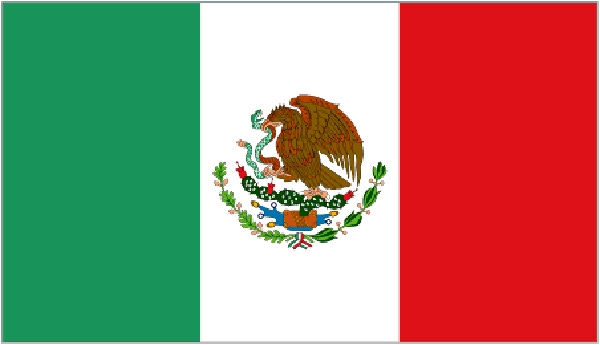June 16, 2014

The challenges that the U.S. pork industry are seeing this year – in terms of livestock numbers, product supply, pricing and the uncertainty caused by the porcine epidemic diarrhea virus (PEDV) – are also in play in the Mexican pork market.
And, as the U.S. pork industry has seen in its export numbers rise 11 percent globally through April, exports of U.S. pork to Mexico have increased 16 percent, driven in part by the PEDV situation in Mexico’s own pork industry and increasing per capita consumption of pork.
While PEDV has had a significant impact on the U.S. market, the effects may be even more dramatic in Mexico, where the World Animal Health Organization (OIE) reports Mexican officials have found the virus in 17 of the 19 states where testing has been conducted. That has led to reduced domestic pork supplies at a time when the economy here continues its rebound from the peso devaluation in the fall of 2008 and the subsequent economic downturn. That rebound is creating a growing appetite for protein meat products, including pork, and imports are being relied upon to fill the gap in domestic supply as well as to satisfy an increasing per capita demand for pork meat.
Consequently, the first four months of 2014 show a 16 percent increase in volume of U.S. pork sales to Mexico, reaching 221,249 metric tons (487.8 million pounds). Those exports are valued at $475.3 million, a 37 percent rise over 2013 levels. Collectively, those make Mexico the top volume market and No. 2 value market for U.S. pork exports.
While higher pork weights have somewhat offset the decline in piglet numbers, one interesting fact is that all of the volume growth in U.S. pork exports to Mexico so far in 2014 is in muscle cuts – up 22 percent in volume and 45 percent in value. Since variety meat sales are not driven by animal size but by the number of animals, the PEDV impact is easier seen here. Regardless of animal size, the number of feet, kidneys, livers, etc., remains the same. Variety meat exports to Mexico in 2014 are level in volume year-over-year, while higher prices have driven values up 11 percent.
The U.S. pork export numbers to Mexico are mirrored by those from Canada, which has been aided by a lower-valued Canadian dollar that has eased down Canadian pork prices. Earlier in the year, the Canadian dollar dipped to its lowest value in six years, giving a price advantage to exports from Mexico’s other NAFTA trading partner.
PEDV in Mexico
The first case of Mexico’s PED virus was first reported in July of 2013, and has since spread to Jalisco, Mexico’s leading pork-producing state, and to other states as well. At this point, the industry does not have a firm estimate of the impact of the virus or the long-range effects on the domestic industry.
However, for those pork producers whose animals remain unaffected, the run-up in hog prices has made for a very profitable year. In every month but February of this year, hog prices have increased by double digits. In Jalisco, for example, year-over-year carcass prices are up about 40 percent. And with feed prices down, that has led to healthy profits for those with healthy pigs.
Certainly the domestic supply situation is a key factor driving pork imports, although it is interesting to watch a traditionally price-sensitive market increasing its purchases of U.S. pork 16 percent in volume and 37 percent in value. One indication that there may be a larger increase in Mexico’s per-capita pork consumption are signs that pork purchases from all sources are rising. One major retailer that USMEF works closely with is importing 36 percent more pork this year, indicating higher demand.
Impact of Pork Campaign
USMEF-Mexico will soon be concluding the third year of a consumer campaign designed to increase per- capita consumption of pork by helping consumers better understand the taste and eating pleasure of pork. The campaign does not specifically highlight U.S. pork, since much of the pork imported from the U.S. is sold to processors and is not identified by country of origin. The same is true for U.S. pork and pork products sold through the retail sector. However, since the U.S. accounts for about 90 percent of all pork imported into Mexico – and Mexico imports over one-third of all the pork it consumes – the concept of “a rising tide lifts all boats” is helping to grow our exports.
Since the beginning of the campaign in mid 2011, exports of U.S. pork to Mexico reached consecutive records in 2012 and 2013 and, as mentioned above, exports in 2014 are off to a sizzling start. While certainly not all this good news is attributable to the campaign, based on annual survey data consumers in the targeted audience have significantly changed their perceptions of pork as a healthy meat alternative and are regularly purchasing more pork. According to USDA, per capita consumption of pork in Mexico has increased from 14.8 kilograms (32.6 pounds) in 2011 to 15.8 kilograms (34.8 pounds) in 2012 and 16.4 kilograms (36.1 pounds) in 2013.
The Pork Outlook
The outlook for the Mexican pork market is challenging to predict for the balance of 2014. Given the uncertainty regarding domestic supply and the PEDV impact, import growth should remain positive.
One factor that has the potential to affect imports is whether the Mexican government will move forward with establishing zero-duty tariff rate quotas (TRQs) for several European pork-producing countries. If implemented, that would be a means of helping to moderate pork prices and reduce price speculation. However, the cost of shipping frozen pork from the EU to Mexico could be a barrier to making imports of EU pork economically viable.
In the meantime, while the recovery of the Mexican economy has been slower than anticipated, GDP growth is more than double what it was last year (about 2.7 percent versus 1.2 percent), and that bodes well for continued growth in protein demand and for U.S. pork exports.
You May Also Like



